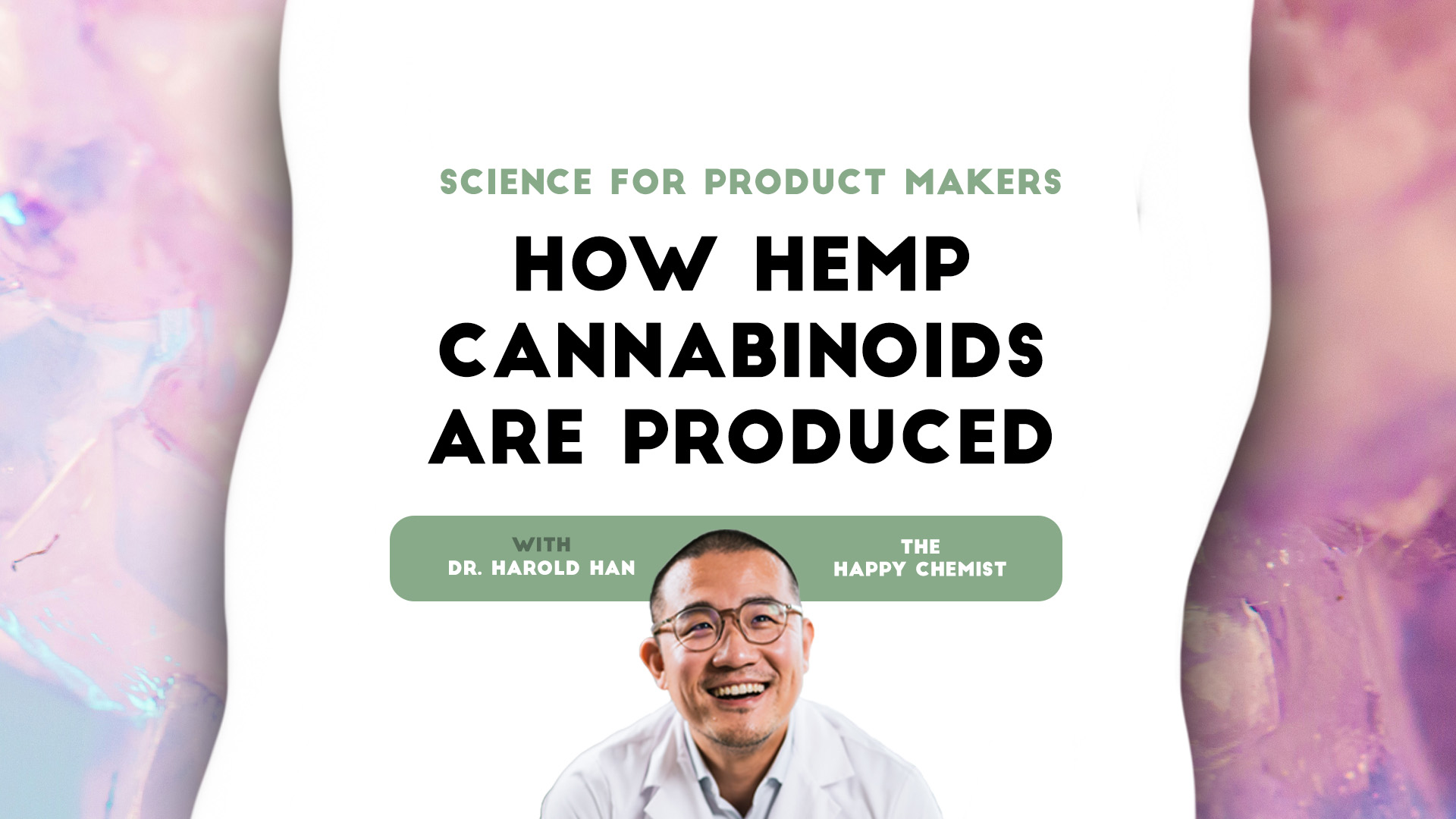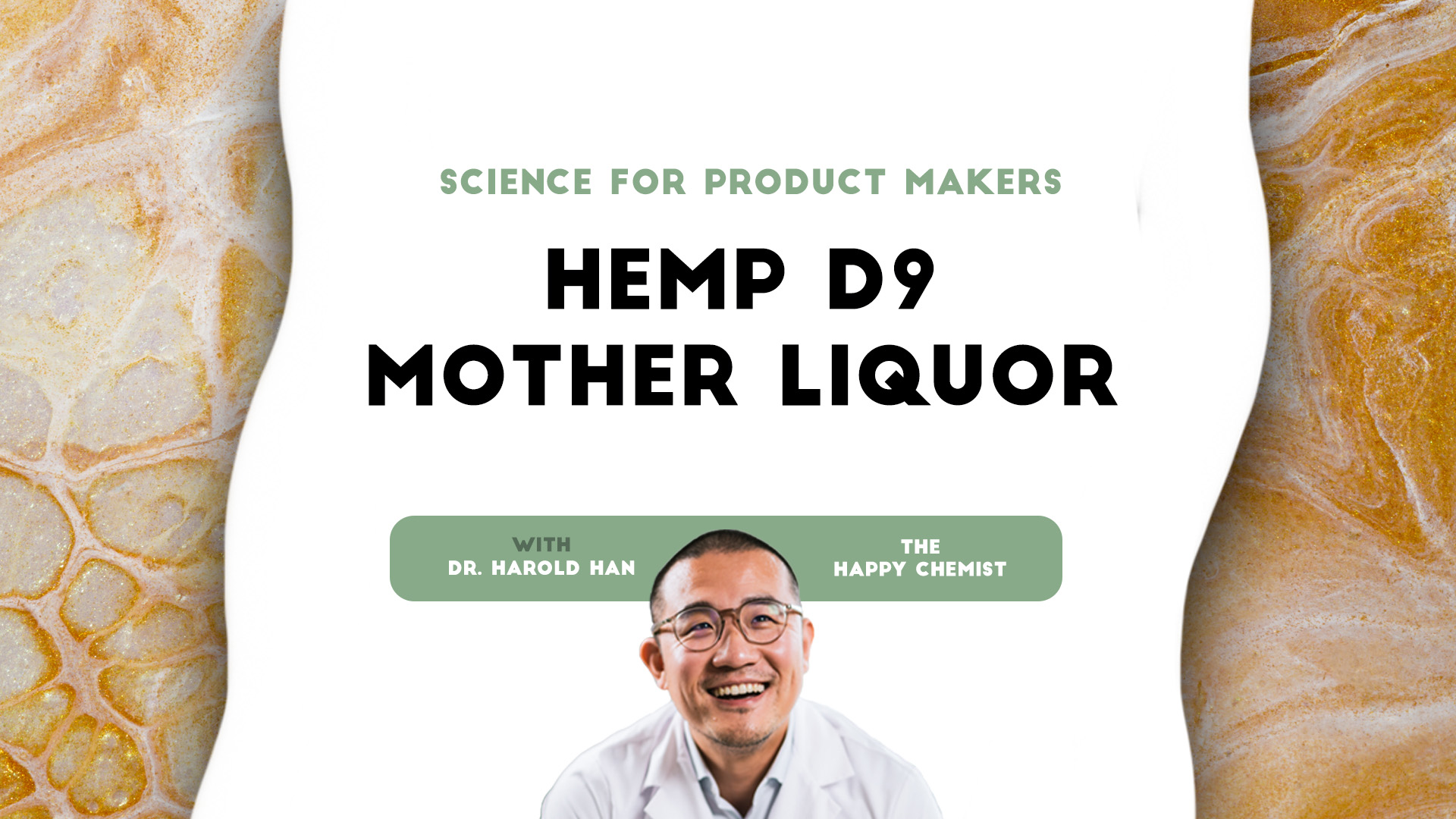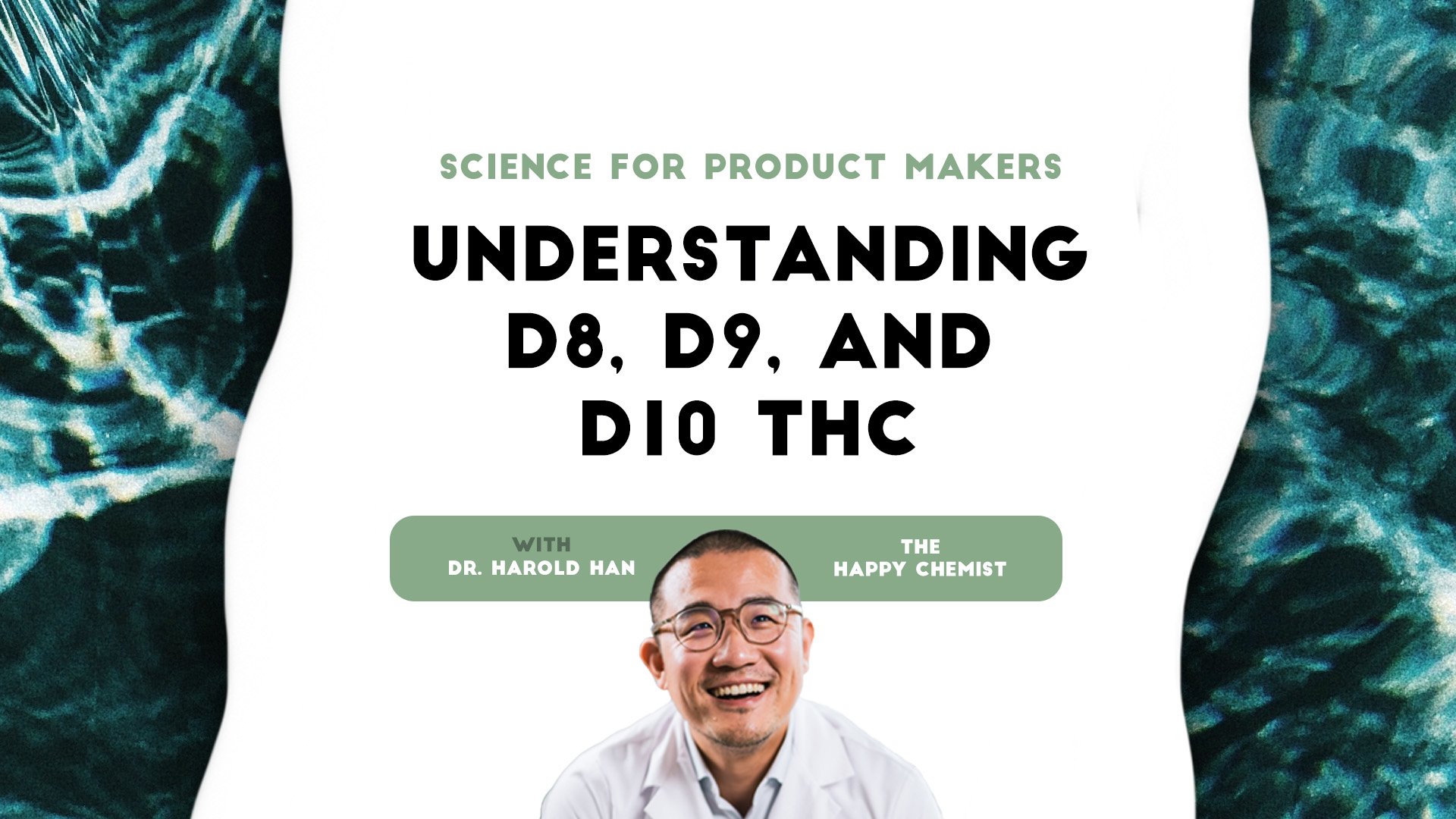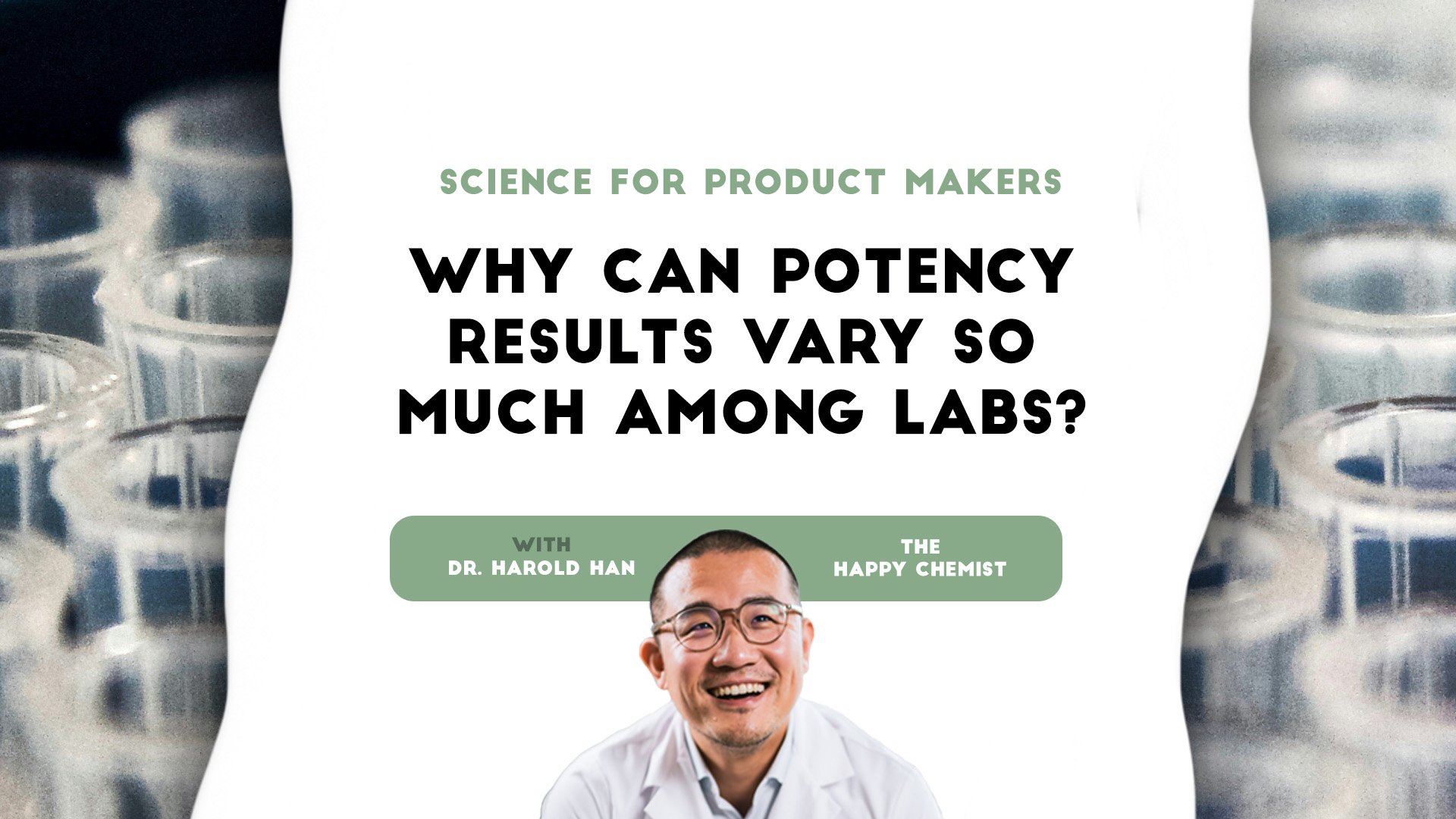Science for product makers: Hemp D9 Mother Liquor
This post is also published as an article on Harold's LinkedIn profile. You can read and leave comments here.
4 min read
 Dr. Harold Han - "The Happy Chemist"
:
6/29/24 9:12 PM
Dr. Harold Han - "The Happy Chemist"
:
6/29/24 9:12 PM

This post is also published as an article on Harold's LinkedIn profile. You can read and leave comments here.
As hemp beverages gain more exposure to the mainstream marketplace, discussion about the origin of hemp cannabinoids is taking center stage among distributors, regulators and brands. It seems necessary to educate and align the community on:
There are two main categories of methods to produce hemp cannabinoids: naturally extracted and chemically modified. While the hemp plant naturally expresses over 100 cannabinoids, only a few can be extracted based on the high level of expressions by certain hemp cultivars. On the other hand, most of the rare cannabinoids are only expressed in trace amounts by the hemp plant, which makes it economically challenging to obtain through natural extraction. This is where chemical modifications come in.
Chemical modification includes three main methods: chemical conversion, chemical synthesis and bio-synthesis. Below are the definitions of each method and consideration behind why they are deployed:

"Hemp cannabinoid production routes" from Vertosaind
Now, let’s take a look at the 9 most applied hemp cannabinoids, how they are produced currently, and the reasons behind their production methods.
Certain hemp cultivars express high amounts of CBDa and CBGa, which can both be crystallized. Those features make it relatively easy to obtain CBD and CBG isolates from natural extraction at high purity. It is not uncommon to see CBD and CBG isolates at purity above 98%.
Currently, CBN cannot be expressed by any cultivars at a high enough concentration to justify natural extraction. However, it can be chemically converted from CBD. There are potential by-products from the conversion, but due to CBN’s crystallization nature, high purity CBN isolate can be efficiently purified from those byproducts. This is why its price is reasonable for many brands.
CBC (chemically synthesized)
Currently, CBC cannot be expressed by any cultivars at a high enough concentration to justify natural extraction — and it isn’t easy to convert CBC from other cannabinoids. But CBC can be produced from chemical synthesis using other food molecules (source). The chemical structure of CBC does not allow for crystallization, which makes distillation the main purification method. We can usually get over 95% pure CBC from this synthesis route.
D8-THC can be found only at trace levels in the hemp plant, making natural extraction not an ideal path. However, it can be converted from CBD under an acid catalysis reaction.
This is the most popular cannabinoid in the current hemp beverage market. There are two main routes to obtain D9-THC from hemp:
D9-THCv could be a very interesting cannabinoid for future beverage brands to leverage. There are several ways to obtain it, but some factors may currently prove to be prohibitive.
Both of the acidic forms of THC and CBD exist at high concentrations in the hemp plant. They can both be crystalized, which makes it easy to obtain from natural extraction at large scale.
The table below summarizes the current production method for the major hemp cannabinoids as of Q1 2024. Our industry is never lacking in innovation and new production routes will continue to emerge. As we welcome new technologies, we need to pay close attention to the quality of the chemically modified cannabinoids, where undesired byproducts often co-exist.
BUT we should also not demonize chemically modified cannabinoids, because many food ingredients can be chemically produced with high quality. An industrial standard that regulates chemically modified cannabinoids is necessary to set this industry up for success.

Dr. Harold Han — the “Happy Chemist” — combines his storied background in emulsion chemistry and science with curiosity and fascination in the rapidly growing cannabis industry. Developing nano and micro emulsions his entire career, Harold holds a Ph.D in Surface Chemistry from NYU and is the holder of multiple patents for his inventions in emulsion chemistry.
As the Chief Science Officer at Vertosa, Harold spearheads the company’s development of industry-leading and customized active ingredients for infused product makers, offering pre-suspended aqueous solutions to create incredibly homogenous and stable products while maximizing bioavailability, clarity, and taste.
To learn more about the science of cannabis, make sure to follow Harold on LinkedIn and check out his Happy Chemist videos.

This post is also published as an article on Harold's LinkedIn profile. You can read and leave comments here.

This post is also published as an article on Harold's LinkedIn profile. You can read and leave comments here.

This post is also published as an article on Harold's LinkedIn profile. You can read and leave comments here